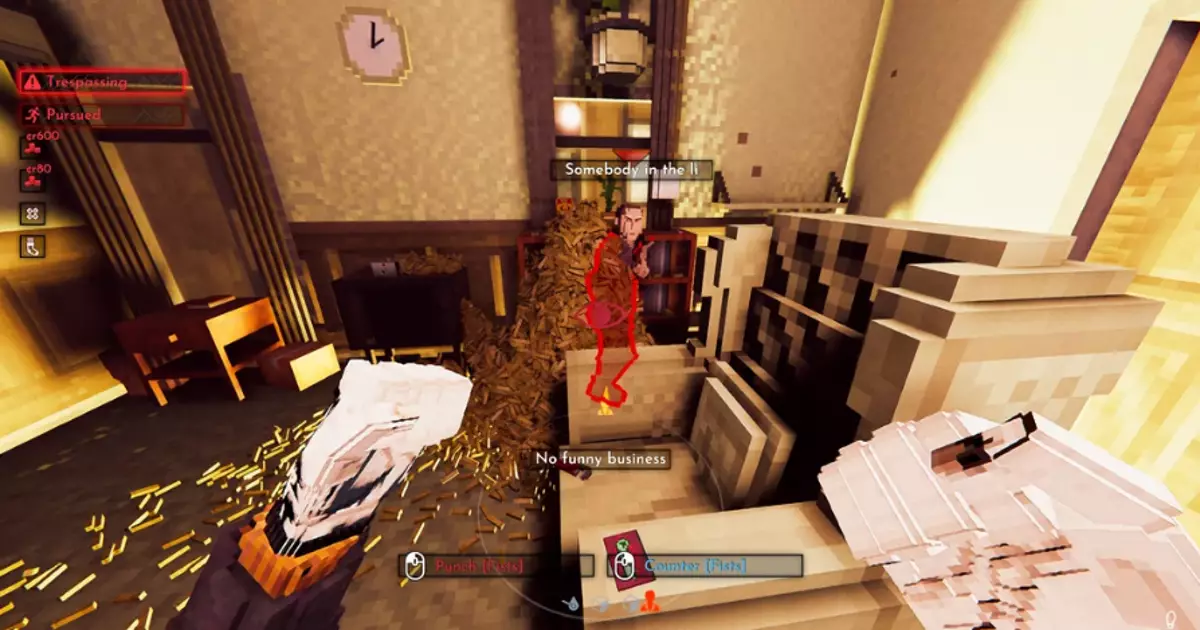A recent update for procgen whodunnit sim Shadows of Doubt added “Sharpshooter Assassins” with high-powered rifles to the game’s glowering alternate-1980s cities, with players having to work out the killer’s vantage point by deducing a bullet’s trajectory, before proceeding to a secondary crime scene to search for a murder weapon and witnesses. The prospect of snipers certainly adds menace to the game’s forensic sandboxing. However, the developers have acknowledged that these new additions may not be as sharp as initially intended, leading to some interesting gameplay experiences for the players.
According to ColePowered Games, the developers of Shadows of Doubt, there have been reports of Sharpshooter Assassins missing their intended targets and leaving behind piles of shell casings at the crime scenes. This evidence suggests that the assassins may not be as accurate as expected, requiring further training or adjustments in their coding. The development team is currently seeking a fix for these less-than-accurate shooters to enhance the overall gameplay experience.
In response to the issues with Sharpshooter Assassins, developers have mentioned a “potential fix for sniper excessive shooting scenario” in the latest experimental branch update. While the specifics of the fix are not detailed, considering giving Sharpshooters limited ammo or implementing an NPC embarrassment system could be viable solutions. Limiting the ammunition available to snipers could prevent them from indiscriminately firing rounds until one hits the mark, improving the realism and challenge of the gameplay. An embarrassment system for NPCs could add a layer of consequence for missed shots, making the in-game world more dynamic and engaging for players.
Shadows of Doubt differentiates itself by simulating killers who fail, whether by accident or design. The game’s murders are enacted in real-time by NPCs with fully simulated lives, requiring them to navigate a generated metropolis to carry out their plans. This level of complexity and realism can lead to instances where the murder simulations fail, resulting in cities going without an assassination for extended periods. While this may seem like a flaw, it actually speaks to the game’s ambitious design and commitment to creating a dynamic and immersive experience for players.
The challenges faced in Shadows of Doubt highlight the unique considerations that developers must account for when creating complex narrative-driven games. Unlike traditional game development where scripted events dictate the player’s experience, Shadows of Doubt relies on dynamic NPC behavior to drive the story forward. This approach adds layers of unpredictability and realism to the game, creating a more engaging and challenging gameplay experience for players. The concept of NPCs making mistakes and failing in their attempts adds a new dimension to the detective genre, offering players a fresh perspective on solving crimes.
Shadows of Doubt’s introduction of Sharpshooter Assassins has presented both challenges and opportunities for the developers and players alike. By addressing the issues with sniper accuracy and embracing the failures of simulated killers, the game continues to push boundaries in procedural generation and narrative storytelling. As Shadows of Doubt remains in early access with no solid release date, the potential for further innovation and refinement in its gameplay mechanics is exciting to consider. Despite the quirks of Sharpshooter Assassins, the game’s commitment to realism and player immersion sets it apart as a unique and compelling experience in the world of detective simulations.


Leave a Reply